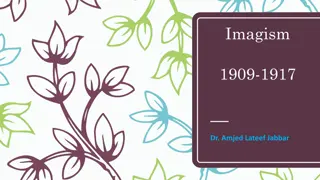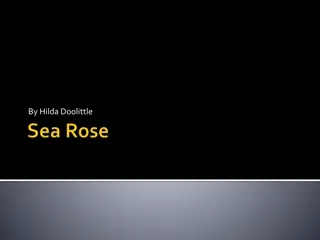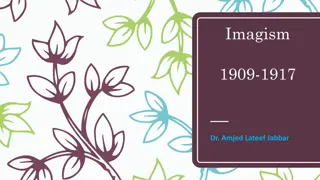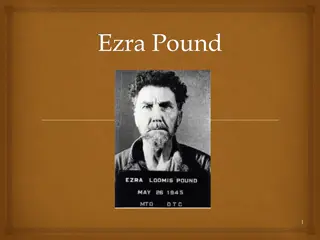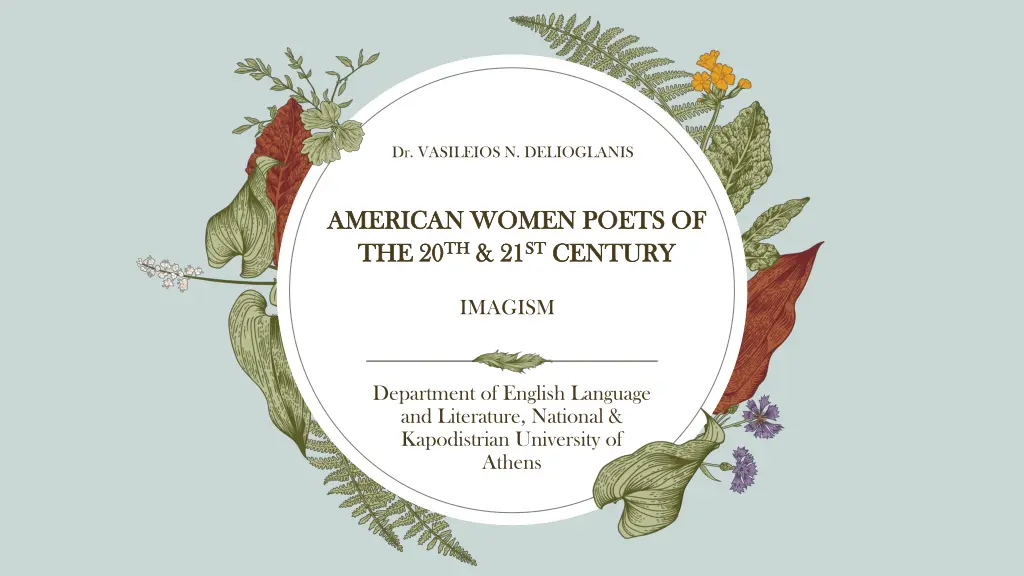
Exploring Imagism in American Poetry
Dive into the world of Imagism in American poetry, as exemplified by prominent figures like Amy Lowell. Discover the essence of direct treatment of the object, the use of common speech, and the creation of new rhythms in poetry. Explore how Imagism emphasizes exactness, conciseness, and freedom in artistic expression, ultimately aiming to produce poetry that is hard, clear, and evocative. Uncover the significance of imagery, emotional conveyance, and the role of symbols in this impactful literary movement.
Download Presentation

Please find below an Image/Link to download the presentation.
The content on the website is provided AS IS for your information and personal use only. It may not be sold, licensed, or shared on other websites without obtaining consent from the author. If you encounter any issues during the download, it is possible that the publisher has removed the file from their server.
You are allowed to download the files provided on this website for personal or commercial use, subject to the condition that they are used lawfully. All files are the property of their respective owners.
The content on the website is provided AS IS for your information and personal use only. It may not be sold, licensed, or shared on other websites without obtaining consent from the author.
E N D
Presentation Transcript
Dr. VASILEIOS N. DELIOGLANIS AMERICAN WOMEN POETS OF AMERICAN WOMEN POETS OF THE 20 THE 20TH & 21ST TH& 21 STCENTURY CENTURY IMAGISM Department of English Language and Literature, National & Kapodistrian University of Athens
Direct treatment of the object All words have something to say Rhythm: sequence of the musical phrase / emotions Imagism (Ezra Pound) Sense of sudden liberation No space/time limitations No abstractions Writing poetry is a kind of art Need for movement & fluidity If there is rhyme, it should give an element of surprise Symbols: natural objects Images are not merely physical description but containers for ideas and feelings.
Amy Lowell (1874- 1925)
1. To use language of common speech and employ always the exact word which fits the description. 2. To create new rhythms in poetry. 3. To allow absolute freedom in the choice of subject. Imagism (Amy Lowell) 4. To present an image (hence the name: Imagist). 5. To produce poetry that is hard and clear, never blurred nor indefinite. 6. Concentration is the essence of poetry. (Coffman 28-29)
1.Exactness 2.Conciseness 3.Free inquiry Imagism (Amy Lowell) 4.Opposition generalities to vague 5.Cosmic expansiveness
Amy Lowell (1874-1925) Amygist movement. polyphonicprose : ignores traditional line breaks, metaphor, alliteration, repetitive sound patterns, and particularly striking images.
Patterns (1915) one of the best known Imagist poems imagery to convey emotional states Longer narrative form and fictionalized persona dramatic monologue historical setting Speaker: aristocratic woman of the Queen Anne period Free-verse rhythms Effective use of image and color to convey emotion Variable meters and line lengths Frequent enjambment and irregular rhymes
Patterns (1915) Patterns Patterns Gender Gender- -marked Imagery marked Imagery stiff brocaded gown garden paths changing seasons the war the dress of the speaker the blooming flowers the falling water
H.D. (Hilda Doolittle) (1886-1961)
H.D. (Hilda Doolittle) allusions to Greek gods and goddesses blending mythology with an imagistic conception of the natural world renewal of myths of the ancient world lesbian lyrics of Sappho Revisionist mythmaking: challenge patriarchal traditions
H.D. (Hilda Doolittle) For her, the ideal Imagist poem: emotionally austere and highly concentrated in its use of language concrete description of the world clear, unadorned visual images free from all abstraction, banality or sentimentality
Sheltered Garden (1916) indirect language of flowers: new femininity against traditional image of femininity flight from the confinements of the suppressed, model femininity objects of nature, flowers, herbs, bark, weed, fruit, frost and wind to express her idea of a real and new beauty
Sheltered Garden (1916) Softness Softness Hardness Hardness Pink Sweet cress Scented pinks Bark Sharp branch Coarse weeds

